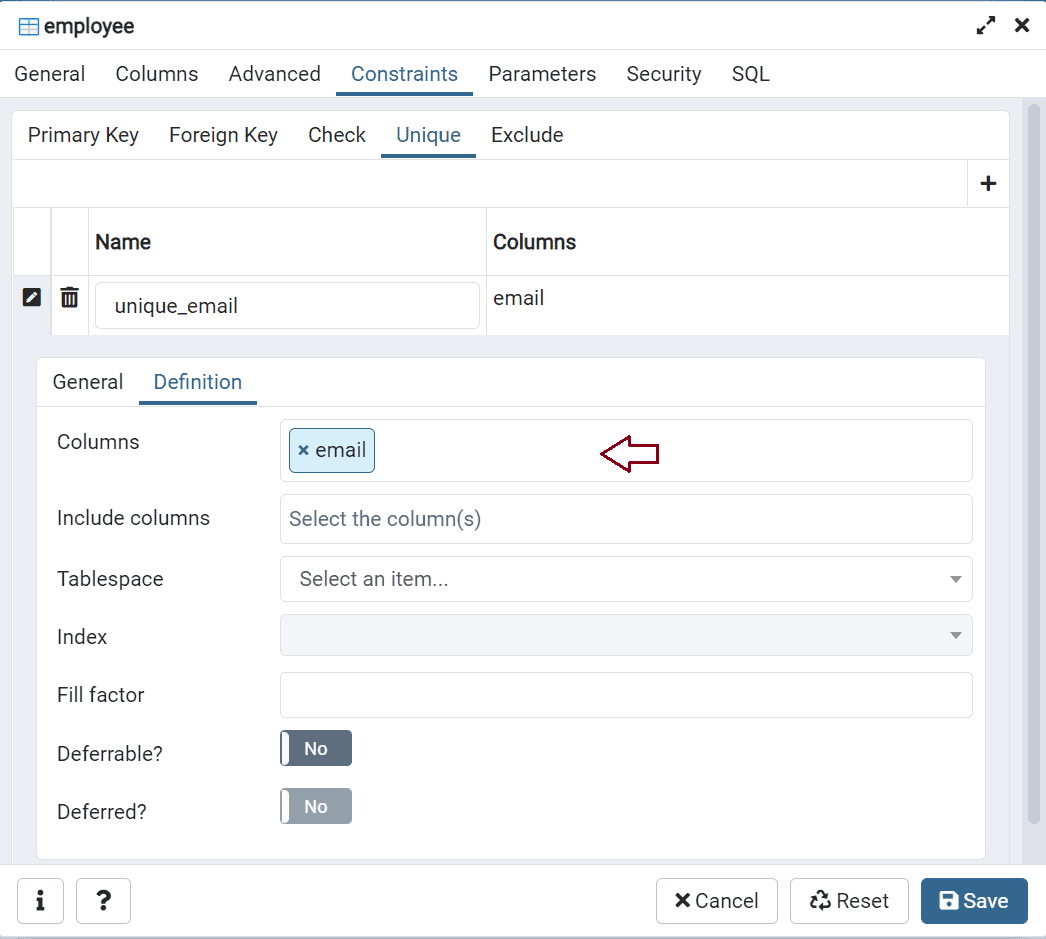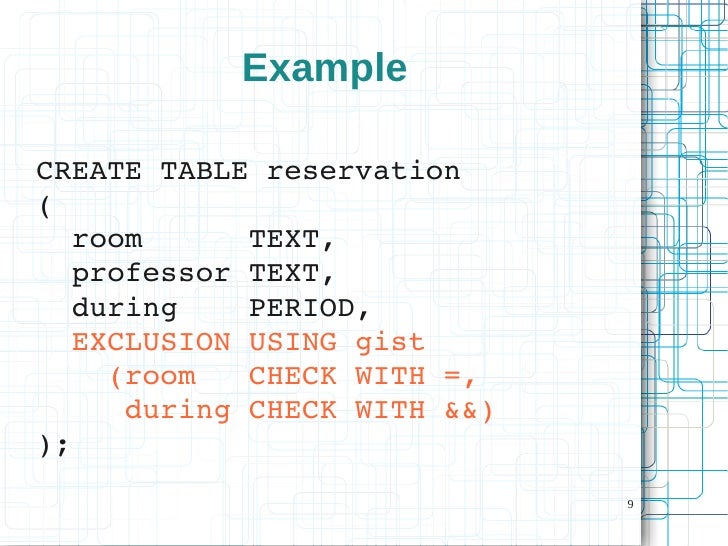

“ Can’t this be taken care of with a FOREIGN KEY?!?” We want to assure that table trails only contains surface_id‘s for corresponding values over in table surface_material. To start we have this table and data that represents trail surface materials: learning=> SELECT * FROM surface_material Īnd this table with trail names and its own surface_id: learning=> SELECT * FROM trails Without Check constraints, we can surely relate for their remarkable benefit is most appreciated when you have to make do without them. See this example where I try to impose that type of Check constraint during table creation: learning=> CREATE TABLE num_try(id INTEGER CHECK(id IN ('Bubble', 'YoYo', 'Jack-In-The-Box'))) ĮRROR: invalid input syntax for integer: "Bubble" Life Without Check ConstraintsĪn old saying I’ve heard that resonates with me is: “ You don’t miss the water until the well runs dry.“ It is invalid to attempt and constrain an INTEGER column to prohibit storing text values since the data type itself will not allow it.
#TABLEPLUS CHECK UNIQUE CONSTRAINT POSTGRESQL UPDATE#
Suppose the no_go table has this value: learning=> TABLE no_go Īn UPDATE on the id column value to one that does not conform to the Check constraint also fails: learning=> UPDATE no_go SET id = 155Ĭheck constraints must ‘make sense’ for the target column data type. learning=> CREATE TABLE no_go(id INTEGER CHECK (id INSERT INTO no_go(id) VALUES(101) ĮRROR: new row for relation "no_go" violates check constraint "no_go_id_check"Īs seen above, attempts to INSERT any values that violate the Check constraint fails.Ĭheck constraints not only monitor columns during INSERT, even UPDATE statements (and others e.g., copy and COPY) must adhere to the restrictions as well. Constraints Available in PostgreSQLĪt the time of writing, the PostgreSQL documentation list 6 categories of constraints.Ī simple example for an INTEGER column would be to disallow values greater than say, 100. This boils down to a validation boolean test for truth. Said requirement(s) tend to be ‘professionally’ coined (and often are) as business rules. This specificity requires that the data coming in must comply to the set requirement(s) prior to being stored. In this context, a constraint is a type of rule or restriction placed on a database table column.

What is a Constraint? – A High-Level definition By mandating those specifications in the database, we can minimize the impact inconsistent data has on our business goals and solutions carrying forward. For those specific rules, we must put in place, out of necessity, that ensures we handle and store only consistent data. However, not all is lost in doom and gloom for we have Check constraints to mitigate these issues. Unfortunately incomplete, inconsistent, and ‘dirty’ data are all too common characteristics and realities present in a database-centric field. On the (off) chance you controlled the collected data from the onset of its origination source, consistency would likely be less of an issue.īut, a perfect world only exists (maybe) in one of those many fantasy novels I love to read. How do we win on this front when it comes to controlling the data allowed in our database? Data consistency is of utmost priority and is integral for any sound data solution. By allowing 4 total digits, with 2 at most after the decimal, it is doing its job.

Suppose in that same NUMERIC(4,2) column, you only want values greater than 25.25 but less than 74.33? In the event, value 88.22 is stored, the data type is not at fault. Compliance rules and some sort of ‘standard’ are typically required when designing a schema. You cannot assure the most specific requirements are covered and conform to such broad structuring. Chances are, one already exists to satisfy your need(s). PostgreSQL offers a multitude of data types. Can character text values slip in there? Not a snowball’s chance. NUMERIC(4,2), a viable option, is guarding that column like a watchdog. Need a column with decimal numbers, having a total digit count of 4, with 2 of those after the decimal? Many provide built-in solutions to assist in managing this particular area of data.Ī sure way to control the data entered into a table’s column is with a data type.

Modern databases handle much of the heavy lifting for us. It is a problem from the onset, leading to even more issues. No matter how you slice it or dice it (pun intended). Validating every single piece of data ‘ by hand‘ around the clock is simply impractical. Therefore, we must take measures to handle the influx. As our world turns, data continues to be widespread, abundant, and intensive.


 0 kommentar(er)
0 kommentar(er)
